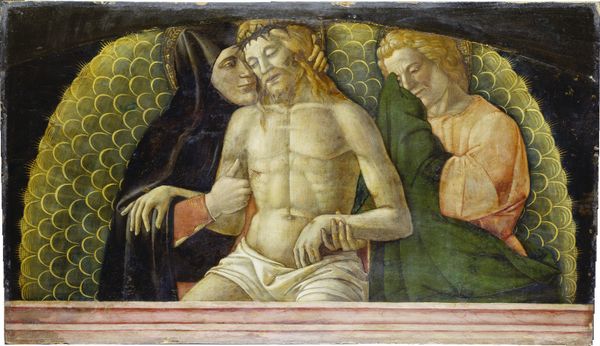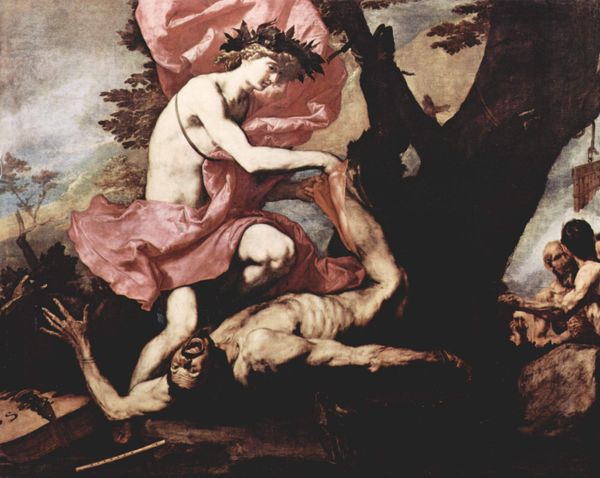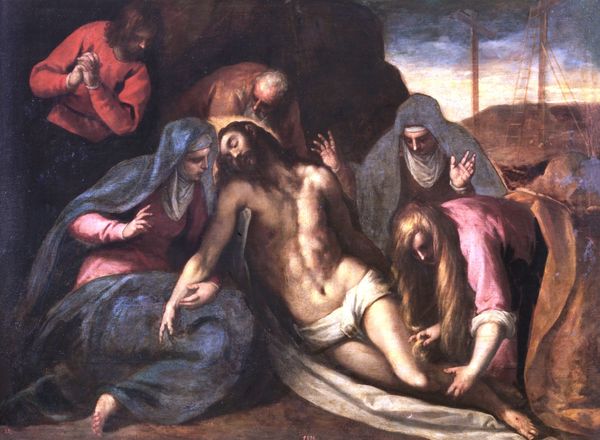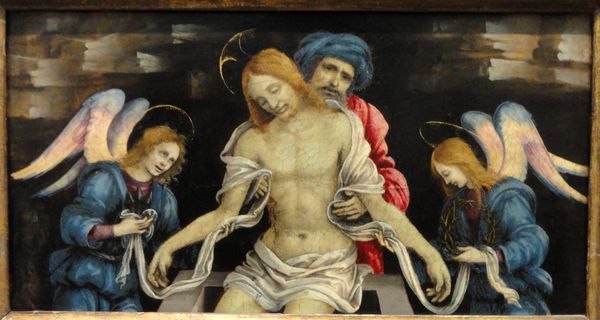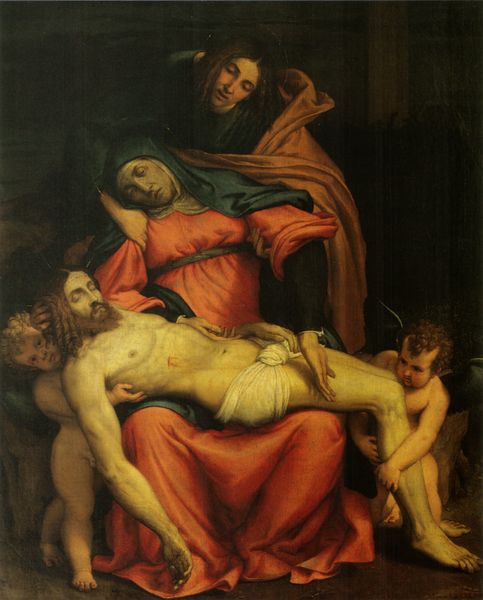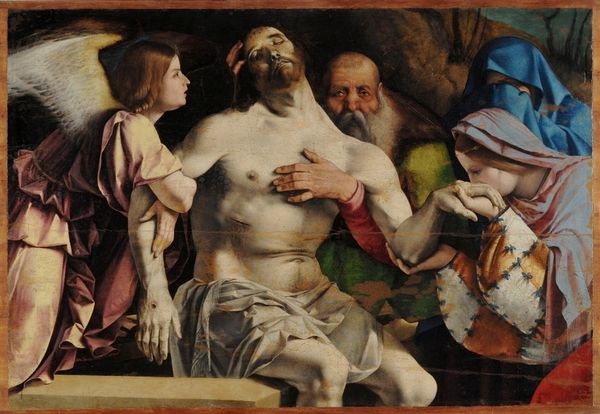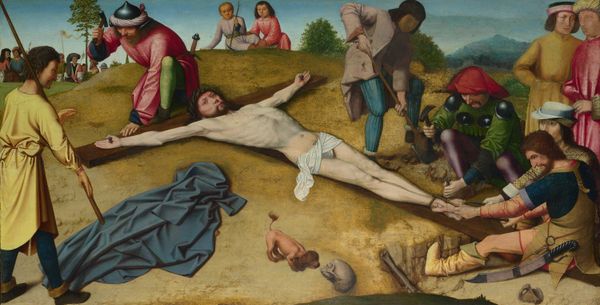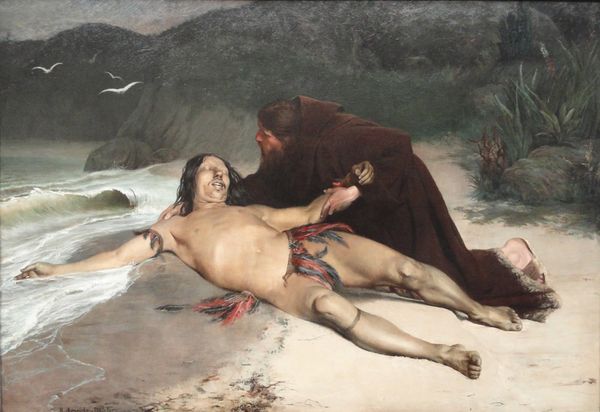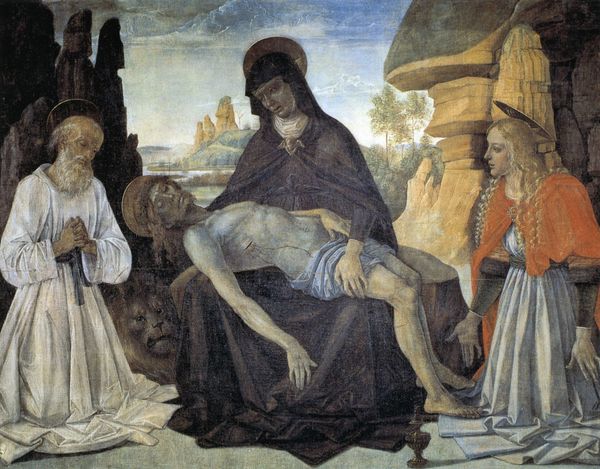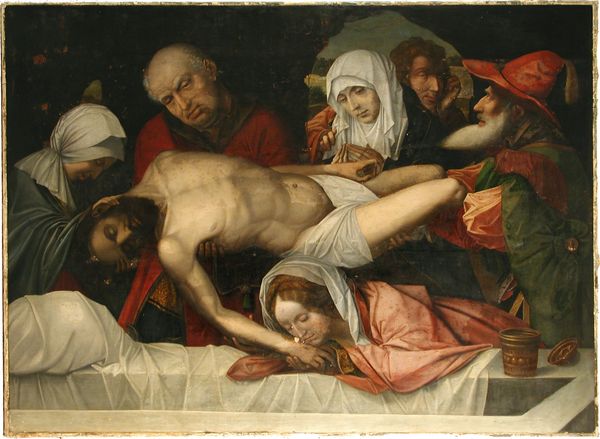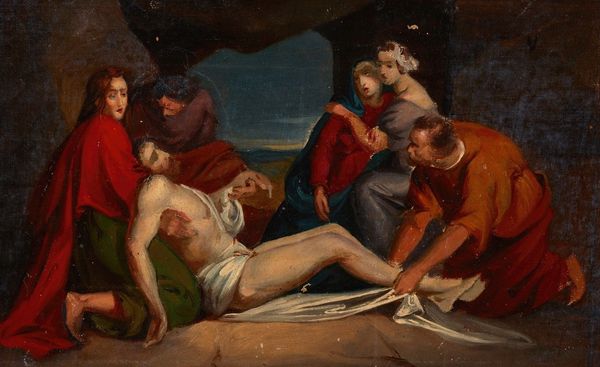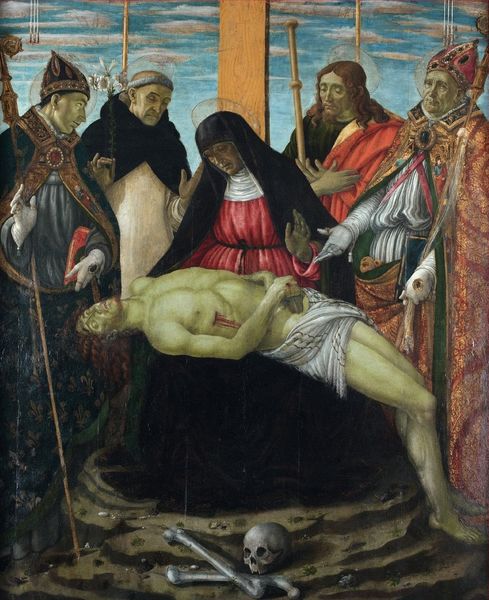
tempera, painting, oil-paint
#
portrait
#
narrative-art
#
tempera
#
painting
#
oil-paint
#
figuration
#
11_renaissance
#
oil painting
#
christianity
#
human
#
painting painterly
#
history-painting
#
northern-renaissance
Copyright: Public domain
Editor: This is a detail from Matthias Grünewald's "Entombment," part of the Isenheim Altarpiece, created around 1516, using tempera and oil on wood. It’s intensely somber and unsettling, and the level of detail in Christ's wounds is frankly shocking. What can you tell me about how this altarpiece was made, and its broader cultural impact? Curator: The brutal physicality is indeed striking. The "how" of it is key. Consider the altarpiece's location: a hospital, specifically one treating skin diseases. Grünewald employed tempera and oil meticulously, layering glazes to achieve this realism. Think about the raw materials – the pigments, the wood, the labor – and the artist's understanding of anatomy but also the economic investment required to execute this massive polyptych. Its power derives, in part, from this material investment designed to move and to function within the context of healing and suffering. Editor: So, the materials themselves are meant to communicate something about pain and empathy? It makes me think about the value placed on craftsmanship and devotional objects. Curator: Exactly! This wasn't just some painting. It was an expensive, materially rich object designed for a specific socio-economic environment of healthcare. What does the presence of luxurious imported pigments say about the institution that commissioned the work and the value system that informed its creation? Consider the economic exchange necessary for a painting of this scale during the Renaissance! The value isn't solely artistic or even religious; it's deeply embedded in production and consumption. Editor: That's a fascinating way to look at it. I usually focus on the emotional impact, but seeing it through the lens of labor and resource investment is eye-opening. Curator: By shifting the focus to the materials and the process of creation, we uncover a network of labor, economic exchange, and social function far beyond the immediately visible iconography. This perspective adds layers to our understanding. Editor: I agree, analyzing the materials definitely deepens my understanding. Thanks for sharing this insight.
Comments
No comments
Be the first to comment and join the conversation on the ultimate creative platform.

